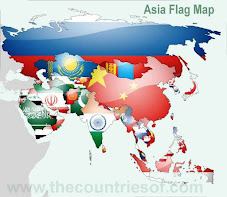The history of Asia can be seen as the collective history of particular
distinct peripheral coastal regions such as East
Asia, South
Asia, Southeast Asia and the Middle
East linked by the interior mass of the Eurasian steppe. See History of the
Middle East and Outline of South
Asian history for fmore details.
The
coastal periphery was the home to some of the world's earliest known
civilizations and religions, with each of the three regions developing early
civilizations around fertiles rivers valleys. These valleys were fertile
because of the soil there was rich and could bear many root crops. The main
civilizations in Mesopotamia, India, and china
shared many similarities and they exchanged technologies and ideas such as
mathematics and wheel. Other countries . Like that of writing likely developed
individually in every areas. Cities, states, and then empires developed in
these lowlands.
The steppe region had long been inhabited by mounted nomads, and from
the central steppes, they could reach all areas of the Asian continent. The
northern part of the continent, covering much of Siberia was
too inaccessible to the steppe nomads due to the dense forests and the tundra. These
areas in Siberia were very sparsely populated.
The centre and periphery were kept separate by mountains and deserts.
The Caucasus, Himalaya, Karakum Desert,
and Gobi Desert formed barriers that the steppe horsemen
could only cross with difficulty. While technologically and culturally the city
dwellers were more advanced, they could do little militarily to defend against
the mounted hordes of the steppe. However, the lowlands did not have enough
open grasslands to support a large horsebound force. Thus the nomads who
conquered states in the Middle East were soon forced to adapt to the local
societies.
The spread of Islam waved
the Islamic Golden Age and
the Timurid Renaissance, which
later influenced the age of Islamic gunpowder empires.
Asia's history features major developments seen in other parts of the
world, as well as events that have affected those other regions. These include
the trade of the Silk Road, which spread cultures, languages, religions, and
diseases throughout Afro-Eurasian trade. Another major advancement was the
innovation of gunpowder in medieval China, later developed by the Gunpowder
empire, mainly by the Mughals and Safavids,
which led to advanced warfare through the uses of guns.









